A Serie A Roman derby without key players ended up cracking Roma, who lacked any threat in the absence of their star centre-back Manolas. Lazio, on the other hand, took only 12 minutes to break the deadlock. By winning the derby, the home team reignited the race for a Champions League place ending their miserable four-match run.
This tactical analysis explains how Lazio crushed Eusebio Di Francesco’s defensively poor side, and how the Manolas-less backline of Roma was tactically exposed by an attentive Lazio outfit.
Lineups
Both teams deployed their usual formations. Roma played with their regular 4-3-3 aimed at playing a possession-based style. Meanwhile, Lazio kept their usual 3-5-2 shape to play in transitions and other opportunities conceded by their defensively vulnerable opponents.
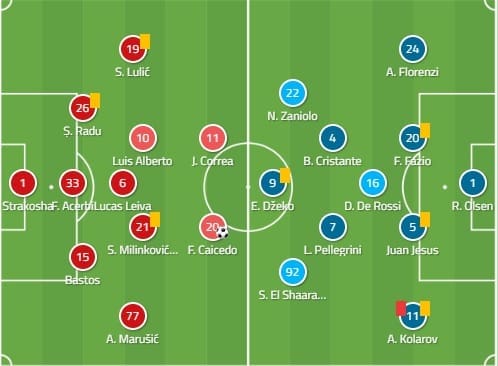
Lazio’s front press
Simone Inzaghi’s men started the game on the front foot. The pressing scheme was laid out as Lazio’s first line of defence. In other words, their front two pressed Roma in the build-up to force the away team to either pass back or play long balls to bypass the midfield. Then in their defensive half, Lazio’s backline and central midfield, three men apiece, were all ready to outnumber their opponents and win the long balls.

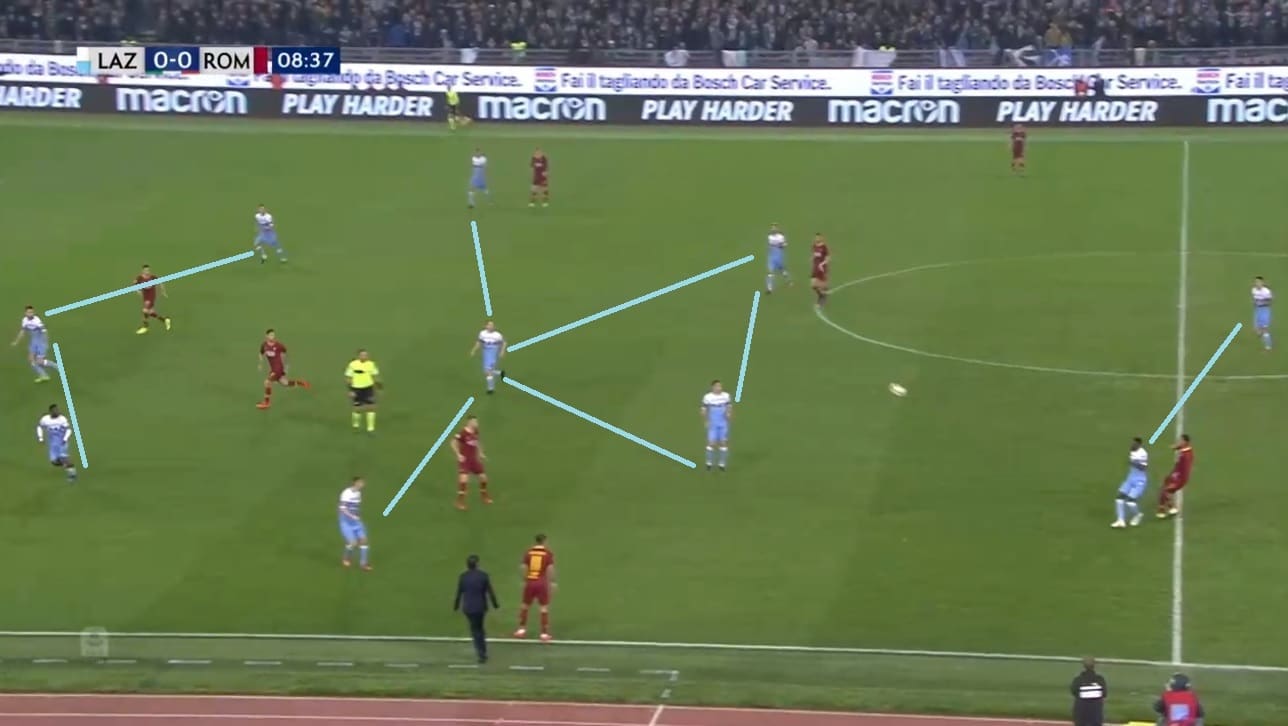
Lazio’s front press would soon be followed by an action-focused press whenever Di Francesco’s men were able to infiltrate Lazio’s front line. With their wide wing-backs and defensive movements made by their respective midfielders and front players, Lazio were able to outmatch Roma in their own half. This action-focused press from the Biancocelesti disturbed Roma’s build-up throughout almost the entire 90 minutes, despite it being the away team which had dominated possession.

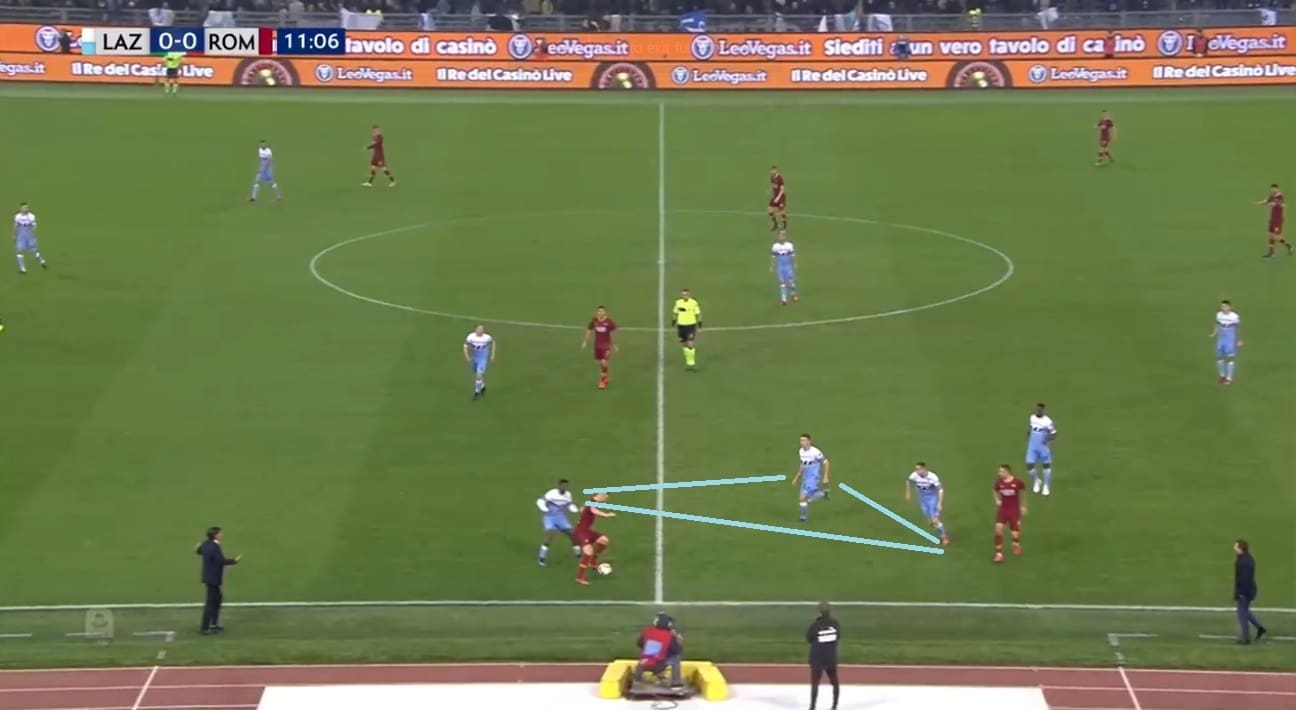
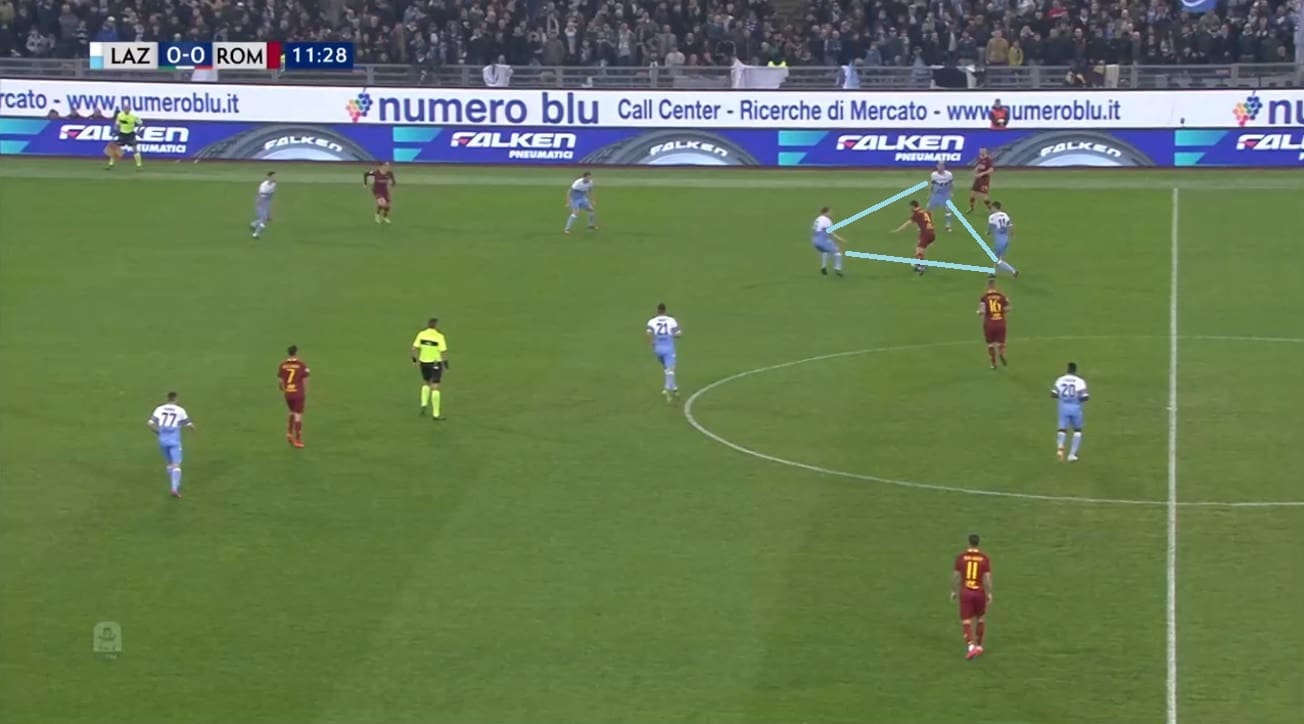
Manolas’ absence breaks Roma’s defence
Roma’s star defender, Manolas, was absent at the Stadio Olimpico and without him, the central defence displayed a prominent paucity of pace. The same also caused Roma to concede both the first and the second goal.
Without Manolas, Rossi had to stay much lower near the backline, which left an insufficient number of players in Roma’s midfield to match with their opponents. The weak backline also restricted the Giallorossi to carry their attack freely up into their opponnents’ half.
Manolas’ unavailability also hit the rigidity of the Giallorossi’s defence when Lazio’s wing-backs stayed up and wide, drawing Roma’s full-backs out of position. This created a gap between Roma’s central defenders and full-backs. Lazio’s front players were ready to exploit the gap and cross Roma’s shattered last line.
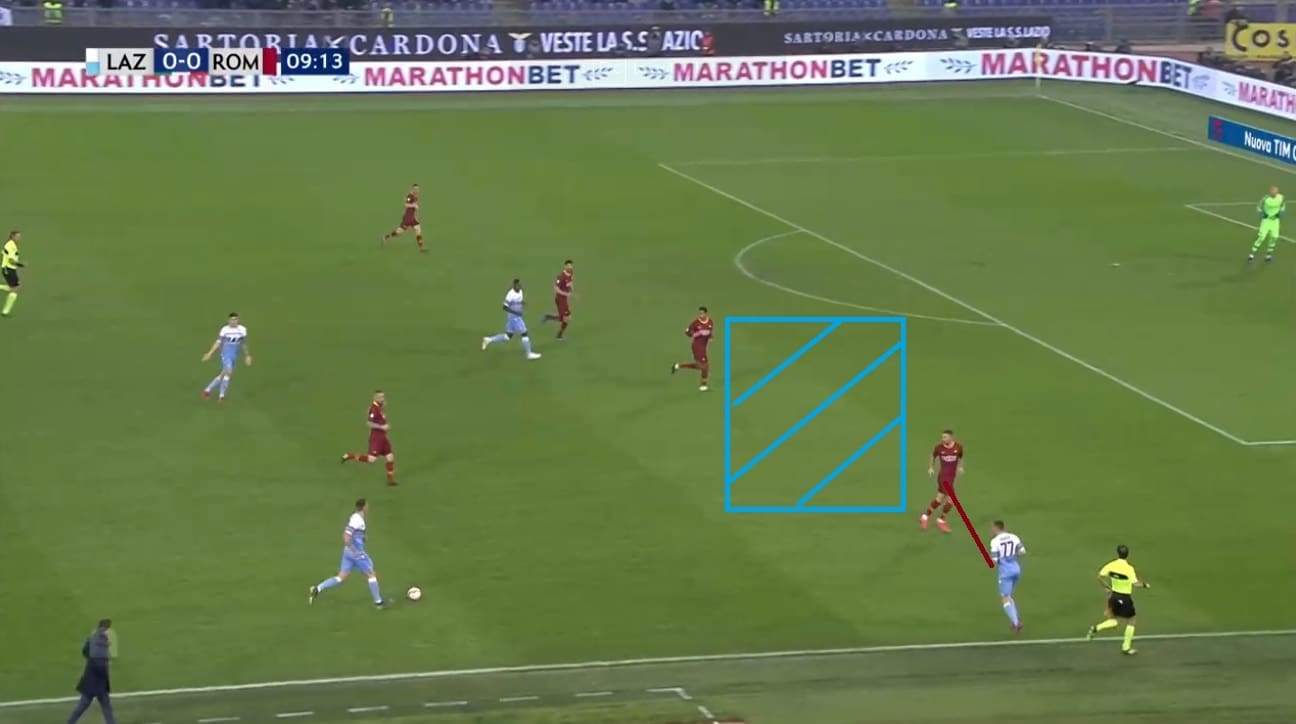
Any defensive mistakes being made by Roma’s midfield or by Fazio weren’t covered by anyone either since there was no Manolas to provide that outermost defensive cover. In particular, it was Fazio’s lack of pace and defensive discipline which cost Roma the penalty in the second half.
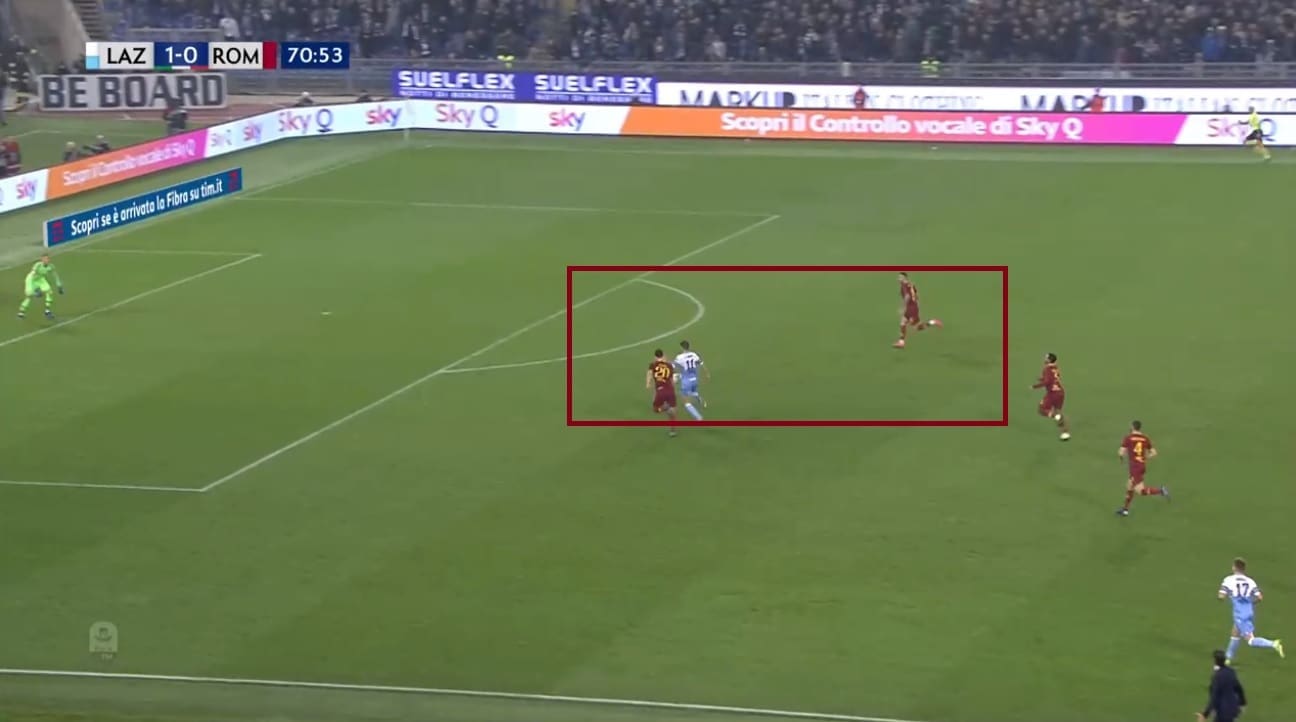
Even though both teams were without their key players in the derby with Lazio’s Immobile also among the substitutes, it was the absence of Manolas which set the scoreline of the game.
Roma leave key spaces for Lazio
It wasn’t just their central defence, but Roma’s overall press was too sloppy to stop Lazio penetrating the penalty area. Even though Lazio’s tactical structure spoke more of a counter-attacking approach, they were able to breach through the press of Di Francesco’s men. On top of utilising the space between Roma’s centre-backs and full-backs, Lazio were able to use the spaces between Roma’s lines.
The same flaws caused Roma to concede all three goals of the derby. In the build-up to the opening goal when Lazio won a throw-in, Roma’s players had to draw out to the advanced areas to match up to their outnumbered teammates. This created a gap between their midfield and defence. While Lazio were already able to win the ball by dominating their opponents numerically, they picked the space between Roma’s lines right from the throw-in.
Lazio played the throw-in directly to Correa, whom the Giallorossi had allowed to breach their central defence already, as shown in the image below. Correa then played an assist to Caledonia who wasn’t being watched by Roma’s defence. The Ecuadorian took a mere two touches to approach Olsen and fire in the opener.
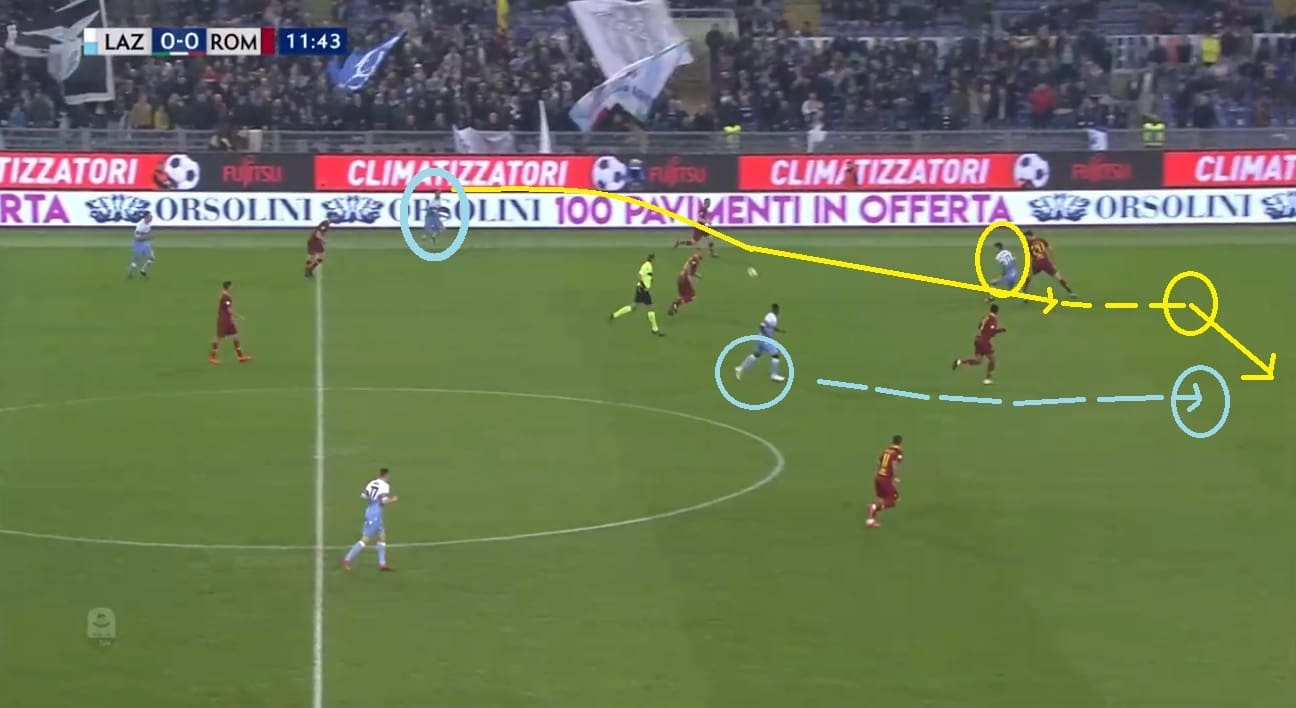
Ironically, the passing sequence of both first and second goals of the derby followed Lazio’s throw-in. For both the goal-conceding throw-ins, Roma left spaces for Lazio which showed the away team’s defensive shortcomings becoming more obvious when the play or even a sequence of passing restarted.
For the second goal, Fazio was beaten by Correa who had run directly onto Immobile’s through-ball using his pace, resulting in a penalty for Lazio. Roma’s players were unaware of the spaces left open during the throw-in. In attack Roma struggled to find their rhythm against a watchful Lazio.
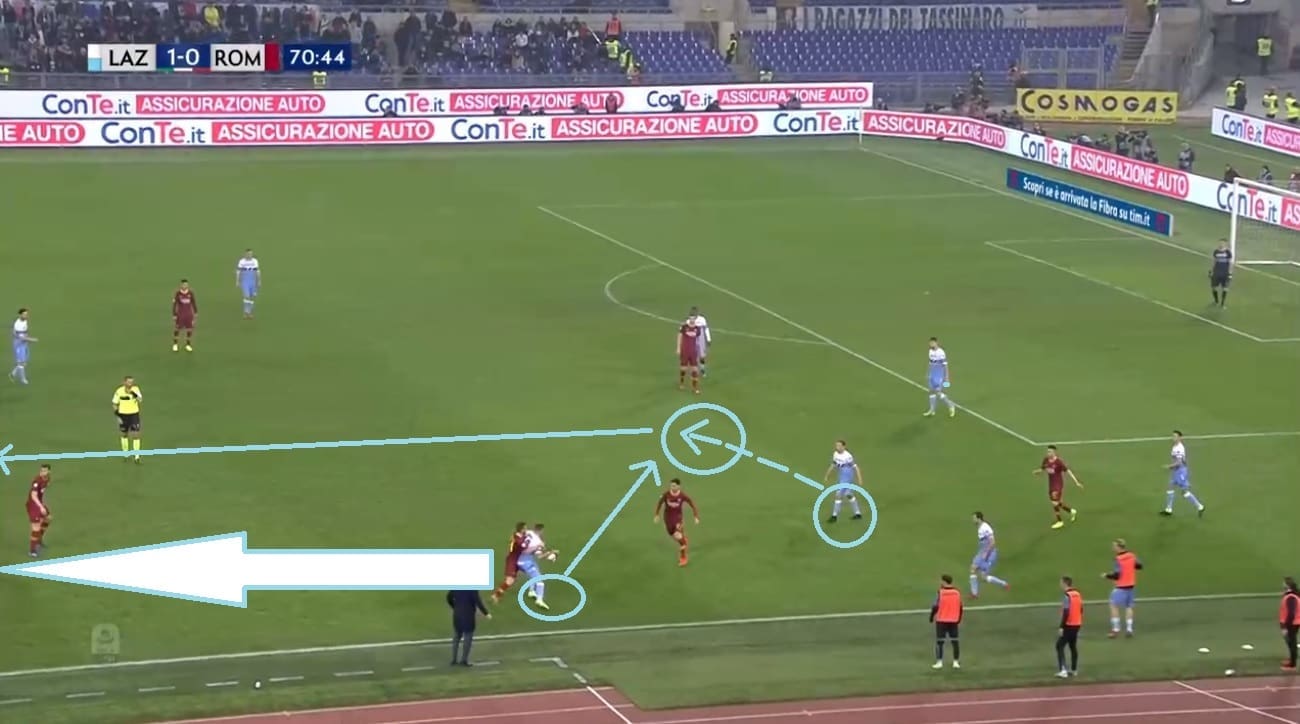
Not only their last line of defence but Roma as a whole were exploited by Lazio due to an ineffective press which left multiple spaces open. The third goal which Roma conceded was the result of a passing sequence created only from the spaces within the positional setting of Roma.
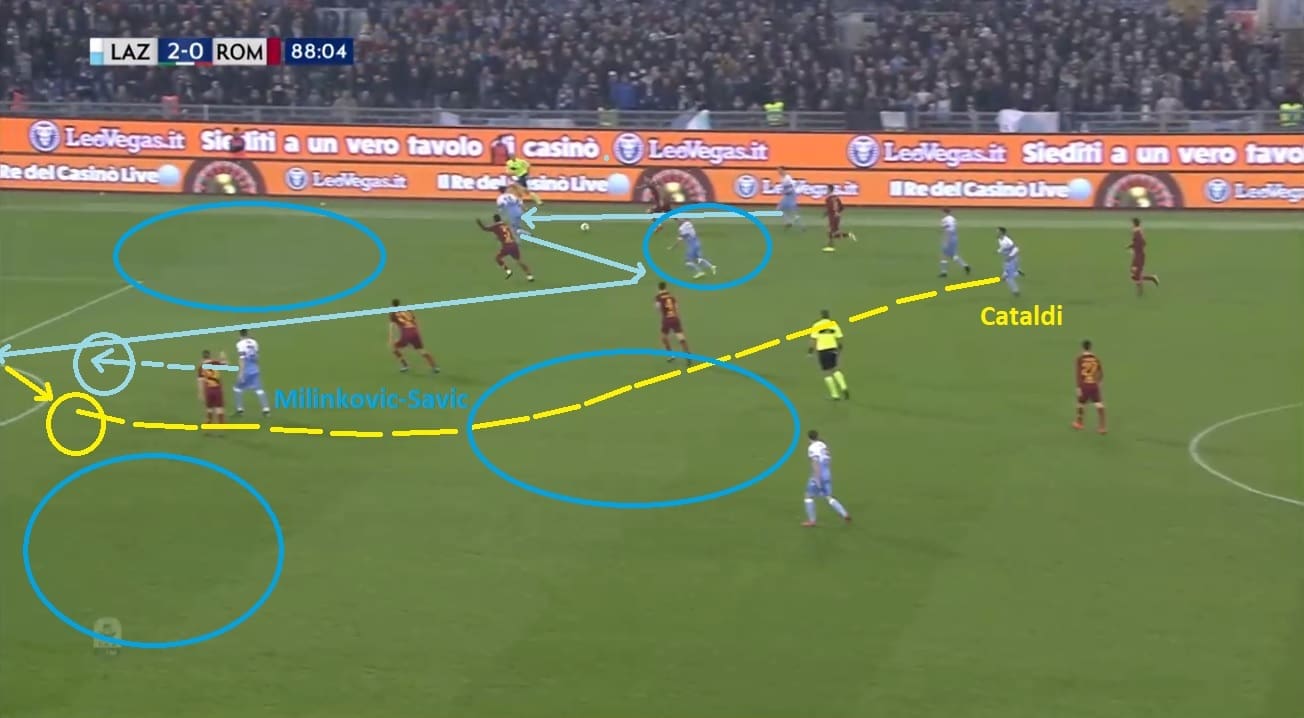
Conclusion
The absence of Roma’s star defender gave Lazio full advantage to use their quick pace and attentiveness against Di Francesco’s side. However, Roma should strive for a quick return to the Champions League places as Lazio are breathing down their necks now. Roma are strong enough at counter-attacking and playing dangerous crosses but need stronger defensive reinforcements to cover up for situations such as missing Manolas due to injury.
If you love tactical analysis, then you’ll love the digital magazines from totalfootballanalysis.com – a guaranteed 100+ pages of pure tactical analysis covering topics from the Premier League, Serie A, La Liga, Bundesliga and many, many more. Buy your copy of the February issue for just ₤4.99 here, or even better sign up for a ₤50 annual membership (12 monthly issues plus the annual review) right here.

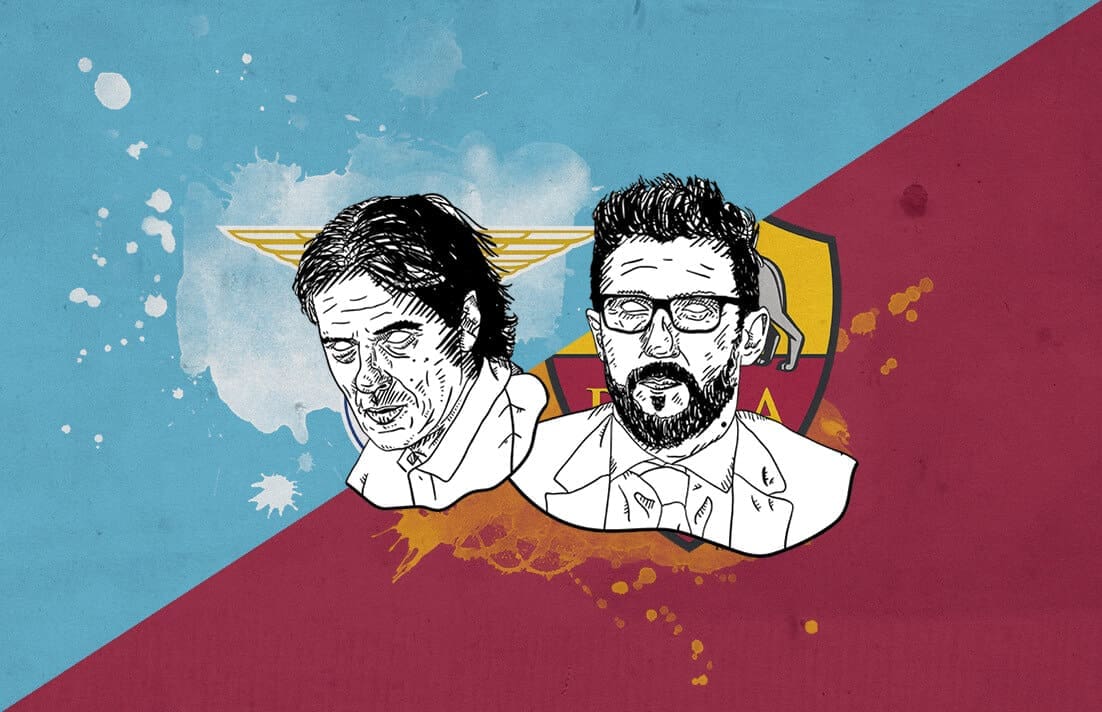



Comments